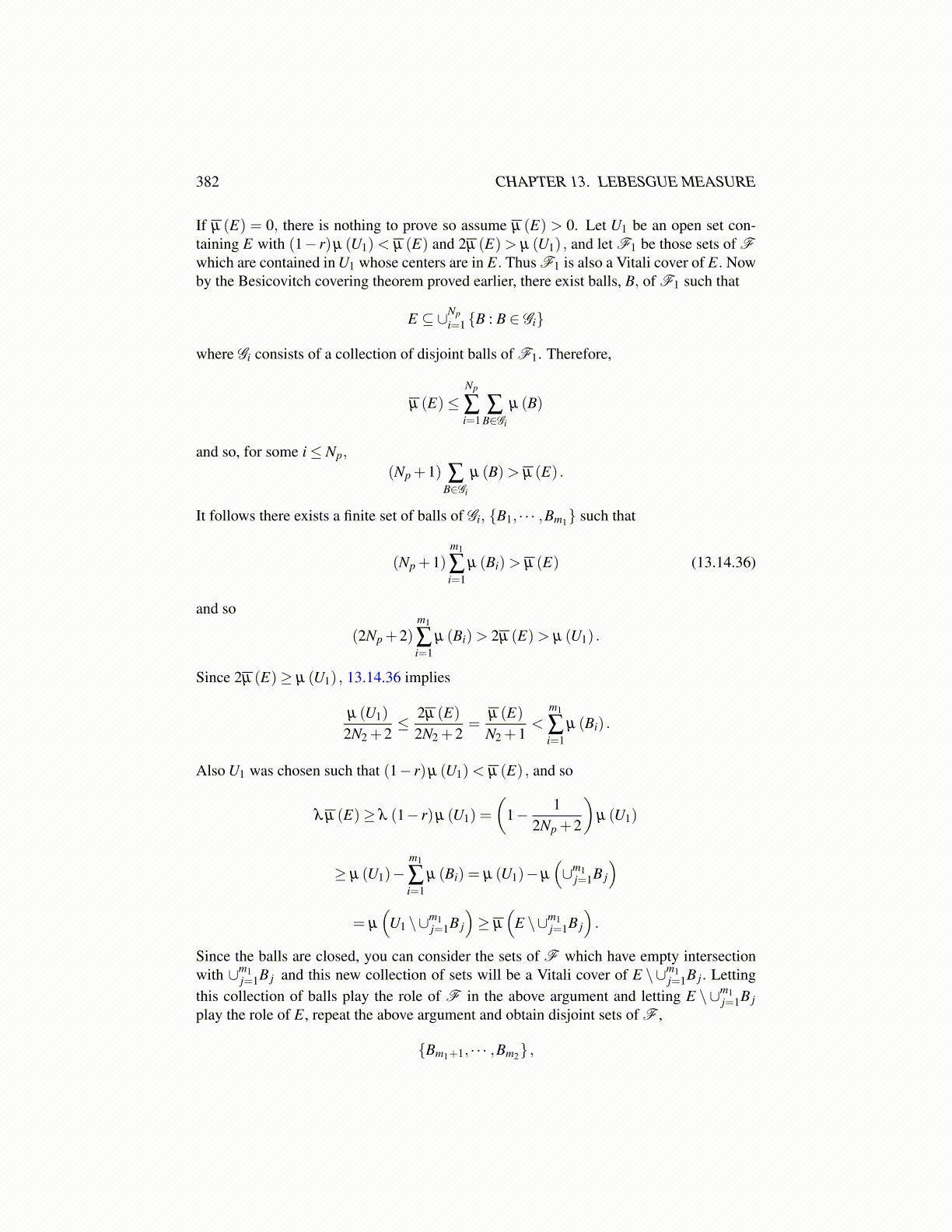
382 CHAPTER 13. LEBESGUE MEASURE
If µ (E) = 0, there is nothing to prove so assume µ (E) > 0. Let U1 be an open set con-taining E with (1− r)µ (U1)< µ (E) and 2µ (E)> µ (U1) , and let F1 be those sets of Fwhich are contained in U1 whose centers are in E. Thus F1 is also a Vitali cover of E. Nowby the Besicovitch covering theorem proved earlier, there exist balls, B, of F1 such that
E ⊆ ∪Npi=1 {B : B ∈ Gi}
where Gi consists of a collection of disjoint balls of F1. Therefore,
µ (E)≤Np
∑i=1
∑B∈Gi
µ (B)
and so, for some i≤ Np,
(Np +1) ∑B∈Gi
µ (B)> µ (E) .
It follows there exists a finite set of balls of Gi, {B1, · · · ,Bm1} such that
(Np +1)m1
∑i=1
µ (Bi)> µ (E) (13.14.36)
and so
(2Np +2)m1
∑i=1
µ (Bi)> 2µ (E)> µ (U1) .
Since 2µ (E)≥ µ (U1) , 13.14.36 implies
µ (U1)
2N2 +2≤ 2µ (E)
2N2 +2=
µ (E)N2 +1
<m1
∑i=1
µ (Bi) .
Also U1 was chosen such that (1− r)µ (U1)< µ (E) , and so
λ µ (E)≥ λ (1− r)µ (U1) =
(1− 1
2Np +2
)µ (U1)
≥ µ (U1)−m1
∑i=1
µ (Bi) = µ (U1)−µ
(∪m1
j=1B j
)= µ
(U1 \∪m1
j=1B j
)≥ µ
(E \∪m1
j=1B j
).
Since the balls are closed, you can consider the sets of F which have empty intersectionwith ∪m1
j=1B j and this new collection of sets will be a Vitali cover of E \∪m1j=1B j. Letting
this collection of balls play the role of F in the above argument and letting E \∪m1j=1B j
play the role of E, repeat the above argument and obtain disjoint sets of F ,
{Bm1+1, · · · ,Bm2} ,